Installation for a bidet: typical installation schemes + step-by-step installation instructions
Not so long ago, a bidet was an occasional guest in the bathrooms of standard high-rise buildings due to lack of free space and low demand. Traditional plumbing fixtures — a shower stall and a bathtub — usually dealt with its role. The specified comfortable device has now ceased to be an exotic gimmick.
To install a suspended view of plumbing, a support frame is required - the so-called installation for a bidet. This design, hidden in the wall, is intended for fastening the bowl and communication units. We suggest that you familiarize yourself with the rules for its selection, assembly and fixation, detailed in the article.
The content of the article:
Bidet - a modern attribute of the bathroom
Outwardly, a bidet resembles a toilet bowl - both in shape and size. Moreover, thanks to modern trends in the unity of style, he repeats all the features of the toilet and makes up a harmonious set with it. Few people will install a device in the bathroom that does not fit into the interior.
There are two categories of bidets:
- floor;
- outboard.
The first are more traditional, they are mounted on the floor, bolted or glued. The basis is a solid "foot" - that is, the design, in fact, by the installation method is no different from floor-standing toilet models.
Built-in devices do not have a massive base for fixing to the floor. They are held at the required height thanks to a special installation for installing a hanging bidet, which is usually hidden behind a false wall made of drywall or plastic panels.
Given that the toilet and bidet are mounted in pairs, enough space is needed to install two installations.
There are no problems with choosing a model for the improvement of the interior: on sale you can find offers of any style and color.Along with cost-effective options for practical, classic design, manufacturers began to produce stylized appliances that emphasize the look of retro furnishings, Provence, hi-tech, modern.
Here are just a small fraction of the possible design solutions for suspended structures:
The cost of suspended bidet models consists of two quantities: the price of the plumbing fixture itself and the installation price. As a result, a comfortable hygiene device can cost 40 thousand rubles, and 240 thousand rubles, it all depends on the material of manufacture and brand.
Pros and Cons of Suspension Structures
As you have already seen, in terms of design, suspended models are not inferior to outdoor ones. However, most of the benefits relate to the technical side.
Among the main advantages of the installation bidet are the following:
- Comfortable location regarding a toilet, sink, or bath. To install the installation you need a small area near the wall, and in some cases - in the free space in any part of the bathroom. This makes it possible to embody the most unusual design ideas.
- Space optimization. Ergonomic and compact bidets, mounted at a certain height above the floor, occupy a minimum of usable area, that is, they are suitable for furnishing the interior even of small bathrooms or toilets.
- The possibility of easy care of plumbing. Hanging devices are accessible from all sides, so they are very easy to clean. In addition, the floor under the appliances screwed to the installation is free, which makes tidying in the room as easy as possible.
- Security for users. The metal frame, which is the main element of the installation, is designed for heavy loads. Modern designs withstand weight in the range of 350-400 kg.
- Reliability. With proper installation, neither the bidet bowl, nor the installation, nor the decorative screen is in danger - the frame material and durable fasteners provide the necessary strength and functionality.
Another advantage will appeal to those who like to do home improvement with their own hands.
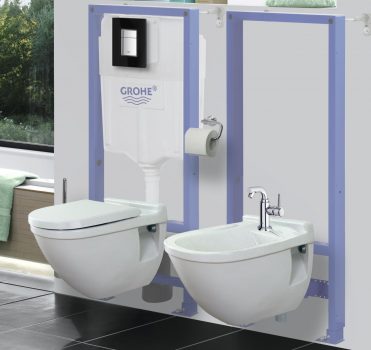
There are also disadvantages, and for some they are decisive when refusing to install a suspended model. For example, not all bathrooms have enough space to install a masking panel.
The second drawback is associated with the complexity of the repair work - sometimes you have to dismantle the protective screen. But the main minus is the unbearable price of kits with installations for some categories of citizens, so they have to do with cost-effective floor models.
Typical installation schemes
If we consider the installation of various modifications of the bidet, then we can distinguish the following working schemes:
- installation of a suspended structure for installation;
- installation of the floor model (for bolts, glue or cement);
- fixing the bidet cover;
- installation of a model with a flexible shower hose.
However, we are specifically interested in the installation, and in this view, only three installation options can be considered:
- separate frame;
- common frame with toilet bowl;
- angular modification.
The choice depends on financial capabilities, availability of space and equipment. The most popular is the scheme with the installation of a separate installation.
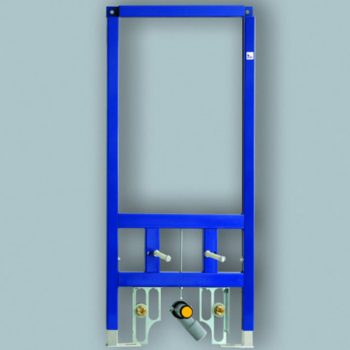
Cold water is supplied to the toilet tank, and cold and hot water lines must be drawn to the bidet, since the design of the bowl is equipped specialized mixer, the installation and connection of which will be introduced by the article recommended by us.
A convenient handle is usually attached to the shelf of the bowl adjacent to the wall, with which you can adjust the temperature of the water. For expensive devices, the temperature settings are set in automatic mode.
DIY installation
Metal installation for installation of a bidet purchased with the device. Top manufacturers produce universal designs that are suitable for hanging bowls of different sizes and weights. Each frame comes with detailed instructions - a step-by-step guide with a set of diagrams and drawings.
We will consider each stage of the installation separately - this is useful if you decide to equip the bathroom yourself.
Place Selection - Space Optimization
It’s better to get started with drafting. It may look different, but most often it’s a sketch of the interior or a drawing of the room indicating all plumbing devices. In addition to the bidet and wall mounted toilet important communications must be identified - sewer line and pipes for supplying cold and hot water.
Do not rely on approximate sizes. In cramped spaces, every centimeter of space matters. First you need to find out the exact dimensions of the installations and plumbing fixtures, and only then draw the diagrams.
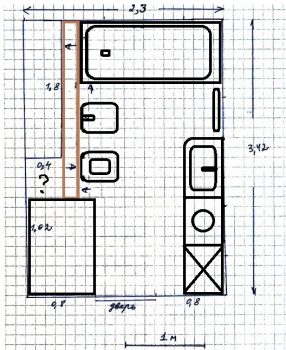
The arrangement of the bath, toilet, bidet and sink should be as thought out as possible. Plumbing must be positioned so that in the future there are no difficulties with its use.
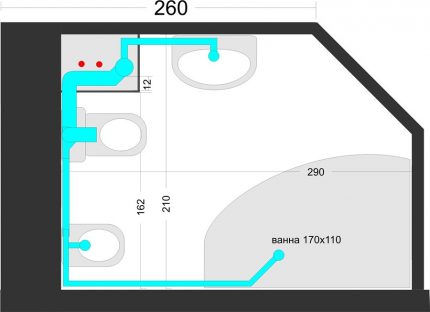
Pay particular attention to the installation support. It should be a solid supporting structure made of brick or concrete (less often - of wood), suitable in size. Please note that most installations are attached to the wall and floor. If there is a shortage of free space, consider the option with angular modification.
In the case of extremely limited space in the bathroom, pay attention to corner installations. It is possible that one of the appliances from a pair of toilet bidets or hanging sink can be placed near the protruding part of the wall. It all depends on the specific layout.
Preparation of tools and materials
In addition to a pre-selected bidet model and a suitable installation for it, you must purchase a kit for installing and decorating a suspended structure. Be sure to consider what material is better to use for the construction of a box or a false wall.
The easiest to install are plastic panels.If you decide to sheathe the installation for a hanging bidet with wooden slats or drywall, worry about protecting the material from exposure to a humid environment.
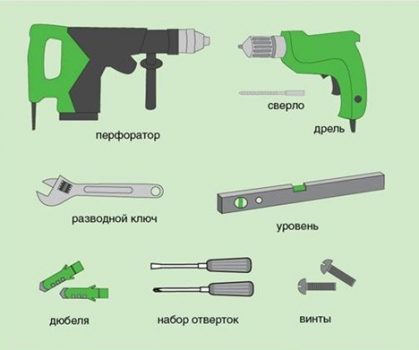
No matter how you hope for your own strength and advice of experienced craftsmen, the manufacturer’s instructions always remain the main guide - you must always keep it handy. Check the complete set of the bidet, you may need a cuff to connect to the sewer.
Wall Mounting
When the preparation is completed, you can proceed to the wall mounting of the frame. Using a tape measure and marker, we mark the fastening points directly vertically relative to the floor.
We draw all horizontal lines using the level. To check the correctness of the marks, from time to time we substitute a metal frame to the wall - the holes in the wall and on the floor should coincide with the mounting points on the frame.
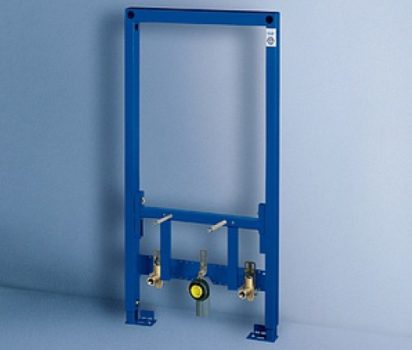
Having marked the places for fastenings (usually 2 on the wall and 2 on the floor), we make holes, then using the dowels and bolts that come with the assembly, we fasten the frame to the wall. Using a key, tighten the height adjusting clips (located on both sides of the frame).
We take the level and once again check the position - the frame must be installed strictly vertically, the reliability of the structure depends on this. If necessary, we make adjustments with fixing bolts.
Important points of installation installation:
We fasten the studs (long holders for the bidet bowl) last.
Water supply and sewage connection
Pipes and bends for connection must be installed before mounting a decorative screen or duct. Two options are possible: in the first case, the mains are already connected, in the second, the installation is fixed at first.
The second solution is suitable for new housing where internal wiring is not done in advance. It is more convenient, since the water supply and sewer can be brought in, already being guided by the location of the installation outlets.

To connect the in-house pipes to the bidet, we install adapters, which we mount on a special frame plate. We fix them in such a way that after mounting the false wall, they protrude at least 20 mm above its surface. Subsequently, we insert a tap from the bidet into the sewer socket, and connect it to the mixer in the pipes with water.
Installation decoration options
There are a lot of design solutions for masking installations for the toilet and bidet, but there are only two main ones. They are hidden either behind a panel that completely covers the wall, or in a box, which as a result takes up less space, since it leaves part of the space free.
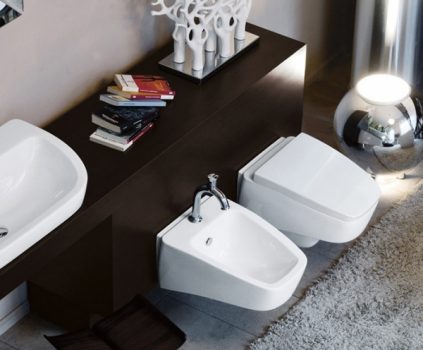
A solid wall, behind which all communications and supporting structures are hidden, makes the interior more noble and free from details. It can be painted, pasted with waterproof wallpaper or ceramic tiles.
However, it must be remembered that various emergency situations (for example, leaks) are possible when a blank wall becomes an insurmountable obstacle to repair work.
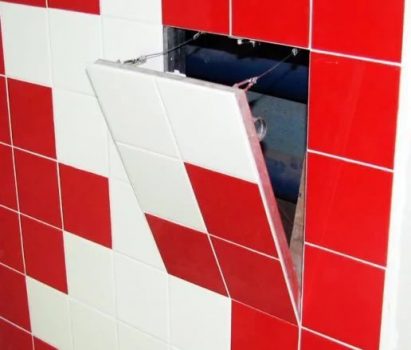
Along with the construction of the false wall, other finishing work is also being completed, for example, wall and floor are tiled.
Installing a Bidet Hanging Bowl
Mounting the bowl is the final step in installing the hanging bidet on the installation. At this point, we already have a completely closed wall, from which two water pipes come out, one wider one for connecting water sealtwo mounting studs.
First, we take a plastic water seal, cut off the straight part according to the size of the bowl and mount it for the release of the installation. Then we remove the protective covers from the studs and gently "string" a bidet on them with a pre-installed mixer.
We connect a hydraulic lock pipe, flexible hoses with water, we check the horizontal level. At the very end, we tighten the nuts and put decorative caps on them.
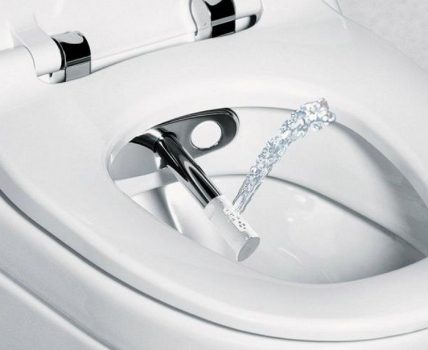
After testing the work of the bidet, the installation is considered complete.
If there are serious difficulties with choosing a location for a bidet, you can get by with a mini version of a useful hygiene device. Installing a bidet console a conventional toilet would be a great solution.
Conclusions and useful video on the topic
What to look for when installing an installation for a bidet, prompted by qualified specialists and understandable video instructions.
Video # 1. Instruction for users of Roca products:
Video # 2. A few tips for installation and adjustment:
Video # 3. Overview of the installation for the bidet:
A beautiful and comfortable bathroom interior is the dream of modern housing owners. Installation for a hanging bidet can provide residents with the necessary comfort and aesthetic appeal.
Using the instructions and drawings, you can install the structure yourself, however, all the nuances of the installation are known only to plumbers.
Tell us about how to install the installation in your bathroom. It is possible that you possess valuable information about the intricacies of the process that are not noted in the article. Please share useful information, ask questions, post a photo on the topic of the material in the block below.

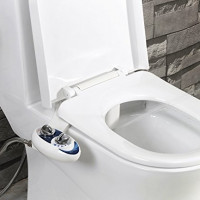 Bidet prefix for a toilet: an overview of the types of bidet consoles and methods for their installation
Bidet prefix for a toilet: an overview of the types of bidet consoles and methods for their installation 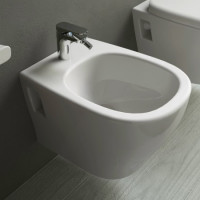 DIY bidet installation: specifics of installation and connection to communications
DIY bidet installation: specifics of installation and connection to communications 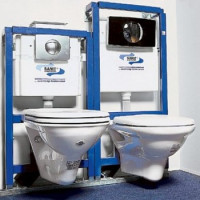 Securing the toilet for installation: step-by-step installation instruction
Securing the toilet for installation: step-by-step installation instruction 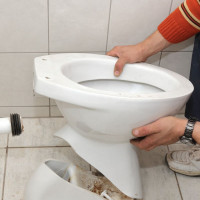 How to replace the toilet: step-by-step instruction on how to replace the toilet with your own hands
How to replace the toilet: step-by-step instruction on how to replace the toilet with your own hands 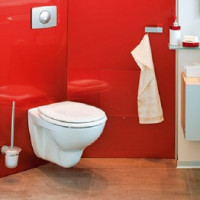 Corner installation for a toilet: selection tips and installation rules
Corner installation for a toilet: selection tips and installation rules 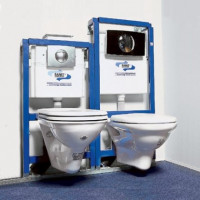 The best installation for the toilet: rating of popular models + what to look at when buying
The best installation for the toilet: rating of popular models + what to look at when buying  How much does it cost to connect gas to a private house: the price of organizing gas supply
How much does it cost to connect gas to a private house: the price of organizing gas supply  The best washing machines with dryer: model rating and customer tips
The best washing machines with dryer: model rating and customer tips  What is the color temperature of light and the nuances of choosing the temperature of the lamps to suit your needs
What is the color temperature of light and the nuances of choosing the temperature of the lamps to suit your needs  Replacement of a geyser in an apartment: replacement paperwork + basic norms and requirements
Replacement of a geyser in an apartment: replacement paperwork + basic norms and requirements
I don’t have much space in the bathroom, so when they wanted to install a bidet, installation was the only way out. The toilet also had to be replaced with a hanging model. Due to this, it was possible to benefit a little and with a sin to place them in half.
If it weren’t for a forced need, I would have done without installations, it’s a very complicated installation, and the plumbers had to pay a round bag.
And if the water sockets in the installation are recessed by 38 mm.in relation to the frame, is it necessary to increase them with extensions to the final level of the wall?
Hello, Alexey. In fact, it is not a very common phenomenon when the water sockets are recessed in the installation frame. Often this decision is caused by design features. I will attach some photos with different installations for the bidet that I had to deal with.
As you can see, all water outlets are laid out so that it is possible to connect taps for cold and hot water pipes to them and bring them outside the false walls of sufficient thickness. A bidet is freely connected to the fittings installed on the pipes.
If in your case, due to the fact that the water sockets are recessed, it is not possible to install a bidet due to the insufficient length of the fittings, then it means that mistakes were made during assembly.